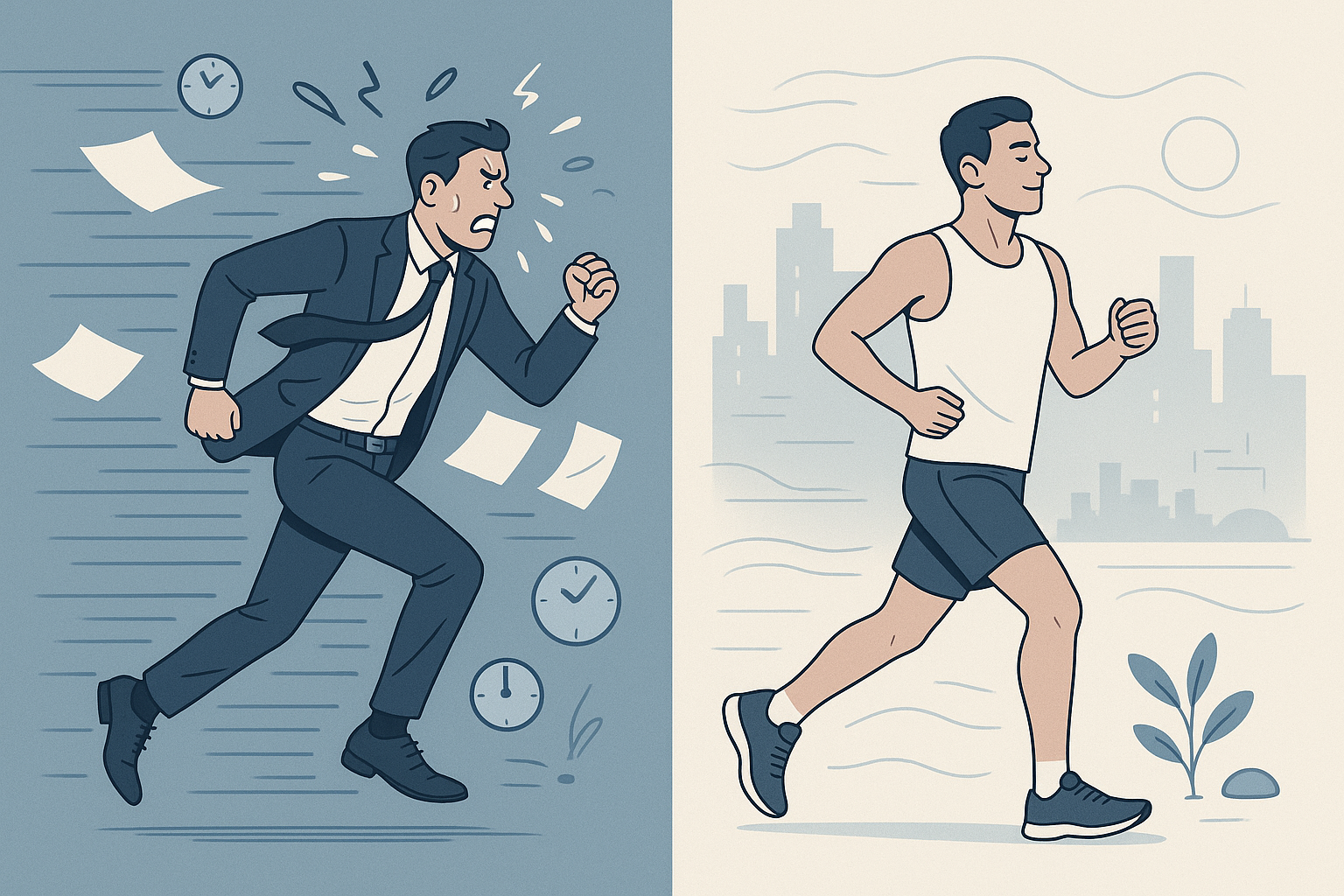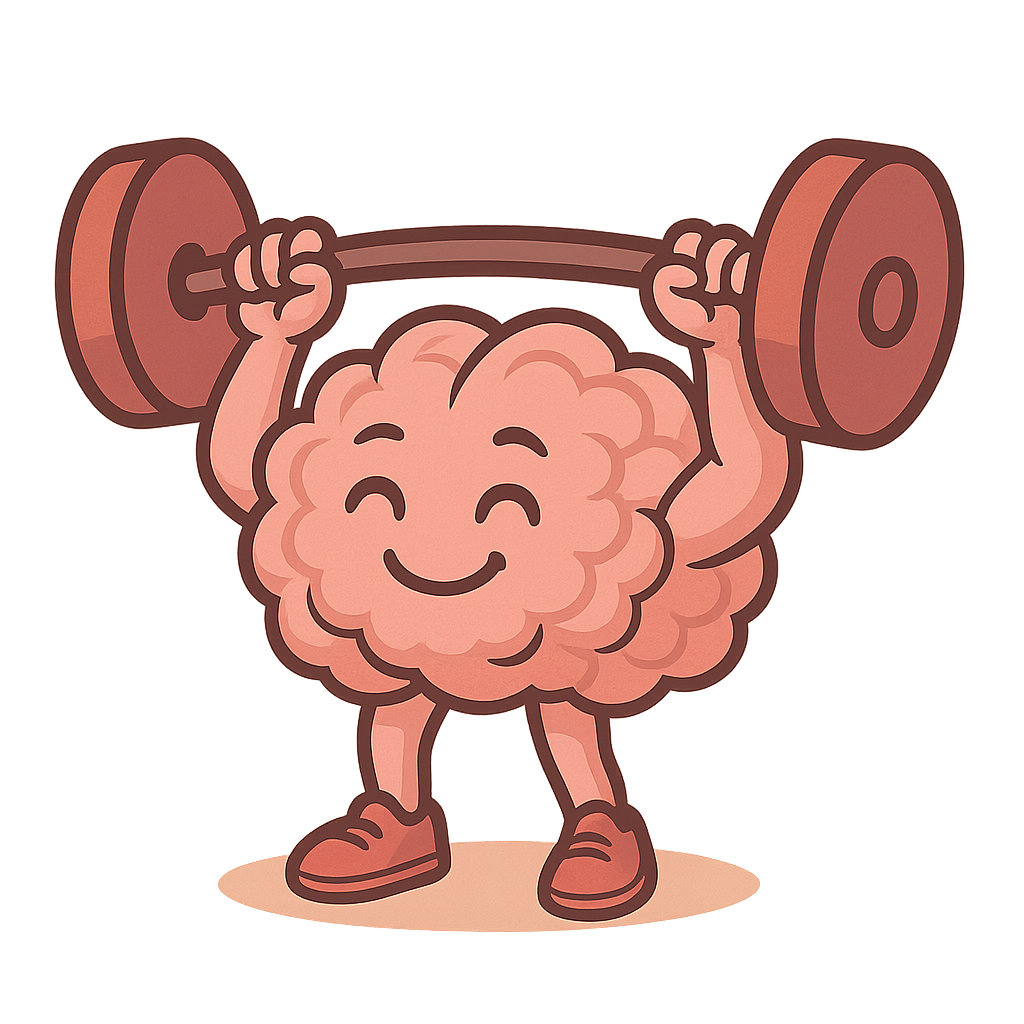This one trick could transform everything about the way you run
"We're re-sending this newsletter to fix a small display error with bullet points. Thanks for your patience!" ~ Harish
You're used to optimizing your life. The best time to get in and out of work. Spreadsheets tracking your finances. Calendars. Even your lifting routine. And so when you lace up your running shoes, you bring that "pedal-to-the-metal" mentality — you attack every mile like it's a performance review.
But here's the problem: Running like you're always chasing a PR is sabotaging your performance both on the track and in the workplace.
Running is a High-Performers' Trap
So many ambitious professionals fall into the exact same pattern. Every run becomes a race against yesterday's pace. Every mile is a challenge to push harder, faster, better. You bring maximum intensity for maximum output—the same approach that works in the corporate world.
But your cardiovascular systems isn't a quarterly report. It doesn't respond to an "always-on" mentality.
The result? Running never gets easier. Your times plateau. You're more exhausted, more stressed out, and life outside of work and training suffers.
The Science of Slowing Down
Elite runners spend 80% of their training at an easy effort level. They understand the way our bodies adapt to run faster for longer. They understand the counterintuitive truth: To run faster for longer, our bodies must be trained mostly through sustained, low-intensity effort.
When you run at low-intensity, you:
- Increase the amount of blood your heart pumps per beat, improving oxygen transport
- Build more and larger mitochondria in your muscles—your cellular power plants
- Delay the onset of fatigue when running farther and longer distances
- Increase capillary density in muscle tissue
Overtraining and Burnout
You're exceptionally susceptible to overtraining because of something called allostatic load: the cumulative burden of stress on your body. Think of it as your stress bank account, constantly being depleted.
Chronic work stress elevates allostatic load for prolonged periods. Couple that with not getting the proper 7 to 8 hours of sleep a night and intense running and you're be overdrawing on that stress bank account.
The consequences can hit hard:
- unexplained declines in performance
- chronic fatigue
- mood dysregulation
- increased risk of injury

Why Easy Run?
Easy runs are, as the name suggests, easy. They do two things: minimize physical strain while lowering chronic stress levels.
Easy runs are far less demanding on the body than intense runs. They promote heart rate recovery, reduce resting heart rate, and enable the body to prioritize repair and recuperation.
Easy runs also make running enjoyable because they're, well, easy. You don't have to dread lacing up for your morning jog anymore. As Matt Fitzgerald, renowned running coach, puts it: easy runs should be at worst, at a pace that "feels natural," like you're "neither holding back nor pushing."
How to Run Easy?
Novice runners tend to be the worst at running easy. But, fret not: An easy test exists. If you can comfortably hold a conversation, you're in the right zone.
Focus on duration, not speed: Start running for 20-30 minutes. Ignore your Garmin or Apple Watch. Leave it at home. Check your ego at the proverbial door — you'll come back only to destroy it in a few weeks.
Breathe through your nose. Jack Daniels, widely considered the world's best running coach, recommends a 2:2 breathing rhythm — inhaling for two steps and exhaling for two steps. You should never feel like you're out of breath on an easy run.
Make 80% of your running easy. Most of your work should really be this easy. And when you keep them easy, you leave enough gas to go hard on your hard runs.
If you have a really stressful week of work or life, you don't have to run. It's okay not to stick to a plan you signed up for months before you realized you have to close a deal or pitch a new client this week. Reduce the length of your runs or just don't run. Get some sleep in — your running (and you) probably need it.
Your Next Run
Commit to one completely easy run. Leave your competitive mindset at the door. Focus on rhythm and breathing. Notice how you feel during and after—both physically and mentally. Easy runs become a chance to think, process the day, or just a moment to be present.
The fastest path to better running performance isn't always running faster. Sometimes, the most productive thing you can do is slow down.
Signing off,
~Your guide, not guru, Harish.
💌 Support the work, buy me an espresso!
It keeps the lights running, the writing flowing, and the espresso, too.
References
- Hughes, D. C., Ellefsen, S., & Baar, K. (2018). Adaptations to Endurance and Strength Training. Cold Spring Harbor perspectives in medicine, 8(6), a029769. https://doi.org/10.1101/cshperspect.a029769.
- Vega, R. B., Konhilas, J. P., Kelly, D. P., & Leinwand, L. A. (2017). Molecular Mechanisms Underlying Cardiac Adaptation to Exercise. Cell metabolism, 25(5), 1012–1026. https://doi.org/10.1016/j.cmet.2017.04.025.
- Kang, Y. S., Seong, D., Kim, J. C., & Kim, S. H. (2020). Low-Intensity Exercise Training Additionally Increases Mitochondrial Dynamics Caused by High-Fat Diet (HFD) but Has No Additional Effect on Mitochondrial Biogenesis in Fast-Twitch Muscle by HFD. International journal of environmental research and public health, 17(15), 5461. https://doi.org/10.3390/ijerph17155461.
- Schrauwen, P., Van Aggel-Leijssen, D. P. C., Hul, G., Wagenmakers, A. J. M., Vidal, H., Saris, W. H. M., & Van Baak, M. A. (2002). The Effect of a 3-Month Low-Intensity Endurance Training Program on Fat Oxidation and Acetyl-CoA Carboxylase-2 Expression. Diabetes, 51(7), 2220–2226. https://doi.org/10.2337/diabetes.51.7.2220.
- Guidi, J., Lucente, M., Sonino, N., & Fava, G. A. (2020). Allostatic Load and Its Impact on Health: A Systematic Review. Psychotherapy and Psychosomatics, 90(1), 11–27. https://doi.org/10.1159/000510696.
- Fitzgerald, M. (2014). 80/20 Running: Run Stronger and Race Faster by Training Slower. New York, New York: NAL, New American Library.
- Daniels, J. (2021). Daniels’ Running Formula (4th ed.). Human Kinetics.
